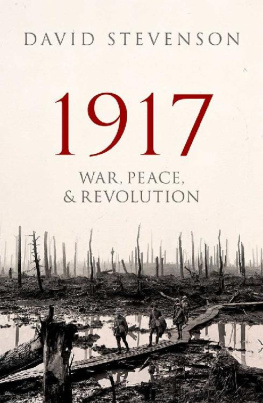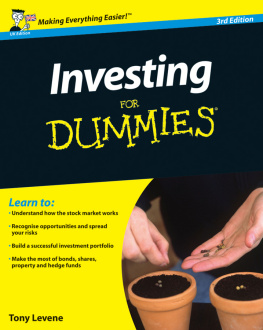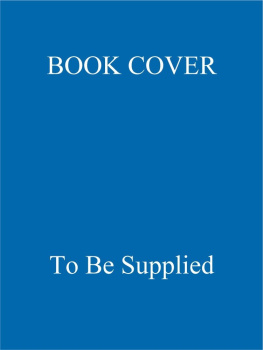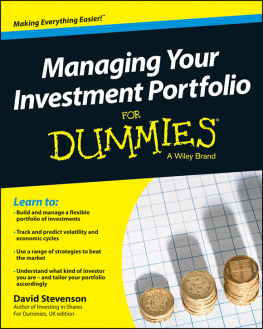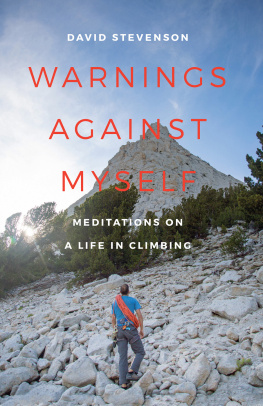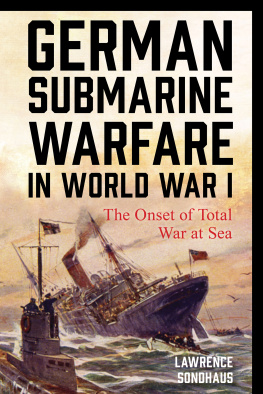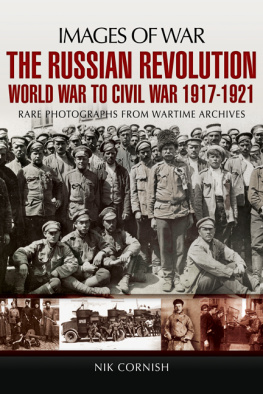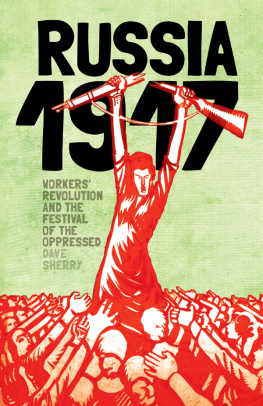1917
War, Peace, and revolution
David Stevenson


Great Clarendon Street, Oxford, ox2 6dp, United Kingdom
Oxford University Press is a department of the University of Oxford. It furthers the Universitys objective of excellence in research, scholarship, and education by publishing worldwide. Oxford is a registered trade mark of Oxford University Press in the UK and in certain other countries
David Stevenson 2017
The moral rights of the author have been asserted
First Edition published in 2017
Impression: 1
All rights reserved. No part of this publication may be reproduced, stored in a retrieval system, or transmitted, in any form or by any means, without the prior permission in writing of Oxford University Press, or as expressly permitted by law, by licence or under terms agreed with the appropriate reprographics rights organization. Enquiries concerning reproduction outside the scope of the above should be sent to the Rights Department, Oxford University Press, at the address above
You must not circulate this work in any other form and you must impose this same condition on any acquirer
Published in the United States of America by Oxford University Press 198 Madison Avenue, New York, NY 10016, United States of America
British Library Cataloguing in Publication Data
Data available
Library of Congress Control Number: 2017932564
ISBN 9780198702382
ebook ISBN 9780191006777
Printed in Great Britain by Clays Ltd, St Ives plc
Preface and Acknowledgements
The responsibility of those who needlessly prolong such a War is not less than that of those who needlessly provoke it.
(Lord Lansdowne to the British Cabinet, November 1916)
I am making this statement as an act of wilful defiance of military authority because I believe that the war is being deliberately prolonged by those who have the power to end it.
(Siegfried Sassoon, Finished with the War: A Soldiers Declaration)
This book focuses on a single year of the First World War, coinciding with the months from January to November 1917. It is one of the best-established benchmark dates in modern history. What follows does not cover everything that happened in these pivotal months. It centres on the wars transformation under the impact of the Russian Revolution and American intervention: events that between them marked the most significant turning point since the opening campaigns had bogged down into stalemate in the autumn of 1914. Yet still the conflict continued, despite its having developed into something that at its outset was scarcely foreseeable or even credible. And that it did continue would have repercussions to the present.
Many paths approach the centre of this labyrinth. The main one followed here runs via an analysis of decision-making, reconstructing it in depth, placing it in national and international context, and showing how decisions interacted. Lord Lansdowne and Siegfried Sassoon began from very different vantage points: as a former Foreign Secretary practised in the ways of Whitehall and a disenchanted officer who hurled his Military Cross into the Mersey. But both perceived the First World War, and the accompanying havoc, as prolonged not by blind impersonal forces but through deliberate will. The conflict was constructed. This is not to say the decision-makers choices were either easy or unconstrained. They generally emerged from complex and protracted bureaucratic processes. By 1917 the debates preceding them were often fractious and left copious records. Alternatives existed, and made responsibility more agonizing. Still, the choices taken were to prolong and escalate the violence. Even Vladimir Lenin, perhaps the wars most visceral critic, sought to transcend it not through peace but through a life-and-death struggle against the bourgeoisie.
To focus on decision-making is to adopt an elite perspective. Historians have analysed intensively the conflicts outbreak in summer 1914 but much less the decisions that propelled it forward and sustained its momentum. The intention is in no way to disparage the alternativeand for long unjustly neglectedapproaches to the conflicts history that in recent years have drawn so much attention. We should investigate not only why governments and high commands gave orders but also why soldiers of all ethnicities obeyed them (or by 1917 increasingly did not) and why men and women on the home fronts gave or withheld their consent. None the less, understanding how the crucial decisions were taken provides an indispensable key to also understanding why they were taken and how far they displayed incompetence or prescience. The English philosopher Bertrand Russell, who helped draft Sassoons protest, remarked This war is trivial, for all its vastness. No great principle is at stake, no great human purpose is involved on either side. Yet as statesmen at the time well recognized, the elite decisions really mattered, and on their outcome might turn tens of thousands of lives. By 1917, moreover, at both elite and popular levels, the war was controversial as never before. Much of what follows therefore concentrates on why costlier and riskier options were pursued instead of other courses, apparently less perilous and less painful.
A purely chronological survey of these developments might convey the whirlwind atmosphere of the time yet lack coherence. Instead the material is organized thematically, in three sections. The first, or Atlantic Prologue, starts with Germanys decision for unrestricted submarine warfare. It was the precondition for American intervention. It gambled on the U-boats throttling Britain so quickly that US entry would not matter, but this calculation proved unfounded, in large part because Britain countered with the convoy system. The first three chapters therefore travel from Berlin via Washington to London. The second section transfers from the oceans to the Continent, and to Europes suicidal military and political impasse. If the submarine gamble led to Germanys defeat and temporary eclipse, its enemies actions likewise scarred them for decades. Tsar Nicholass abdication derailed the Allies spring campaign, and highlighted the revolutionary threat. These warnings notwithstanding, the French persisted with the calamitous Nivelle offensive. The Russian Provisional Government similarly authorized the Kerensky offensive, to the ruin of the countrys liberals and moderate socialists. Scarcely less dispiriting are the origins of Britains ill-starred Third Battle of Ypres, and thosearising also from spring and summer offensivesof Italys rout at Caporetto. Against this backdrop, attention returns to Austria-Hungary and Germanys peace feelers, and to those feelers rejection. In the third section the horizon widens. By 1917 the conflicts global repercussions included new war entries (not only by America but also by Greece, Brazil, Siam, and China), and Britains backing for responsible government in India and a Jewish national home in Palestine. The conclusion links to developments in 1918, via Russias October Revolution, Germanys decision for an all-out Western Front offensive, and Americas intensification of its war effort. These developments concluded the transition that had begun in late 1916, and opened the struggles endgame: in its way a simpler story, during which first the Germans and then their enemies launched culminating offensives, and the latter prevailed.
Much of this book rests on contemporary records, both published and archival. It cites them liberally. It highlights the arguments presented by contemporaries, who in 1917 were all too aware of inhabiting turbulent times. It also draws on work by fellow historians: often of the highest calibre, albeit not previously synthesized in the form adopted here. In particular Ian Kershaws

